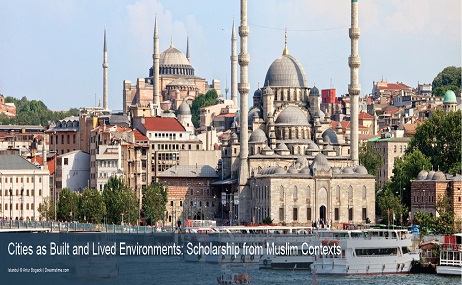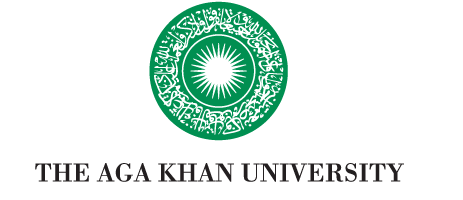Third Phase: Cities
 Cities are a particularly important topic. According to the studies provided by the United Nations in 2013, 54% of the population of the world lived in urban areas, and by 2050 they will be accommodating 66% of the world’s population. Urban dwellers are going to surpass 6 billion by then.
Cities are a particularly important topic. According to the studies provided by the United Nations in 2013, 54% of the population of the world lived in urban areas, and by 2050 they will be accommodating 66% of the world’s population. Urban dwellers are going to surpass 6 billion by then.
“Managing urban areas has become one of the most important development challenges of the 21st century. Our success or failure in building sustainable cities will be a major factor in the success of the post-2015 UN development agenda,” said John Wilmoth, Director of UN DESA (Department of Economic and Social Affairs’ Population Division).
Cities in Muslim Contexts
The Muslim majority regions, on which the MCA project focusing in 2013, bears today five mega cities: Jakarta, Karachi, Cairo, Tehran, and Istanbul. Twenty years ago, only Cairo met the criteria for a major world urban centre.
As the recent coverage by the media has shown, cities in Muslim contexts have reached major historical crossroads. Because cities in the Muslim majority countries have been affected by significant upheavals in the last four decades, the study of urban societies in Muslim contexts is at present more opportune than ever. Muslim majority countries, however, have not all been affected in the same way. Their past and their geographical location have played an important role in their present religious, social and political makeup. The MCA project addresses these points in its Cities collection of abstracts (also in printed version), providing insight into the history, diversity, challenges and dynamism of cities in Muslim contexts.
Although urbanism is generally associated with modernity, since the emergence of Islam at the end of Antiquity in West Asia, cities have been an integral part of Muslim civilisations.
Islam itself was born in a city, renamed by its Prophet simply al-Madina, ‘the town’(the full name in Arabic being Al-Madinah al- Munawwarah), thus represented to the growing Muslim population as the city par excellence. Even beyond Arabia, the Muslim urban experience has been based on cities of historical importance. The heartland of the Greek empire, Constantinople, also known as the city par excellence or Polis, by the Greeks, has been a major city in the Muslim world since the fifteenth century. Thus, the rising Muslim civilisation absorbed the sophisticated and cosmopolitan cities of Egypt, Mesopotamia, or Greece after the seventh century.
A Tripartite Past
Many Muslim majority countries have a tripartite past, divided into pre-Islamic, Medieval Islamic and colonial periods. The medieval and colonial periods are reflected in the planning and structure of the cities, but are diluted within the new post-colonial dimension. Historically, much of the daily life in Western Asian and North African cities revolved around the main bazaar; the colonial phase, however, added new features, as the colonisers fashioned sections of the cities for their own use and needs. In Casablanca, the roads were laid out in a way that enabled French troops to circulate easily. Modern Algiers was specifically planned to host the colonists. The old bazaars gradually lost their importance to new business districts and this decline continued in the post-colonial period.
In the case of Indonesia and Malaysia, urbanism was a legacy of the colonial period, and as late as the 1980s, these countries remained undeveloped. The local language had not even formulated a term for city in its European or Western Asian sense. The focal point of an inhabited zone was a port or a fort. The concept of city was not transferred by the Muslims to the Archipelago, but by Europeans in the seventeenth century. As such, the study of cities in Indonesia and Malaysia would provide a different dimension to the field of urban studies in Muslim majority nations and elsewhere.
Vast changes occurred in major cities of Muslim majority countries after the fall of the Ottoman Empire but accelerated further in the 1940s and 1950s. Many historical cities such as Istanbul, Alexandria, and Izmir lost much of their cosmopolitan social fabric due to supranationalist ideologies and to foreign interference in local affairs. Other famous cities such as Baghdad and Damascus, which in their glory days were the heartlands of Muslim empires and until very recently important centres of art and culture, have turned into disaster zones. Most of these cities have lost their world class position to recently developed global cities such as Dubai and Abu Dhabi. Istanbul stands out, not only because of its citizens’ aspirations to be a major international urban centre, but also due to international expectations, since it is an ancient historical city at the gate of Europe.
Urban Planning
More research is needed to address urban planning, when dealing with cities in the Muslim world, as the disorder generated by industrialisation and overpopulation has impacted significantly on the lives of citizens. Some of the major cities of the Muslim world face grave environmental issues. Tehran made the news in January 2013 due to the high levels of pollution which paralysed the city. During the years of war with Iraq (1980-1988), Tehran’s population more than doubled and the municipality failed to invest in the capital’s infrastructure.
Despite the visible challenges experienced by the major megalopolises in the Muslim world, there has been visionary planning in the past to improve the infrastructure of major urban centres. Already in the mid-twentieth century there were reports and plans for easing congestion in Istanbul, Cairo, and Tehran, which ultimately led to the building of modern underground systems in the 1980s and 1990s. However, the demographic explosion in these cities has been of such a magnitude that even the underground networks and congestion charges have not been sufficient to ease the transport problems.
Effects of War and Endangered Heritage
Istanbul and Karachi are both cities which have suffered from the effects of conflicts that opposed ethnic and religious communities. These tragedies occurred after wars which split the Ottoman Empire and the Indian subcontinent into smaller independent states in the first half of the twentieth century. Kabul, Baghdad, Beirut, Aleppo and Damascus are more recent victims of foreign invasions and civil war opposing groups of different confessions.
The effects of war have not only damaged buildings and monuments but also harmed the intangible heritage of these countries. A series of books catalogued in this volume cover the oral and written traditions of cities such as Damascus, Aleppo and Herat. With the endless war in Afghanistan and the recent conflict in Syria, the subjects covered in these books are more valuable than ever as they reflect a local perception of a culture which might no longer be accessible.
Megalopolises part with their past both by losing their original inhabitants and by falling prey to investments for urban renewal. The economic modernisation of urban centres is sometimes a bigger threat to cities, as we mentioned earlier. Historic districts in Tehran have generally not been well preserved. The monuments of Isfahan are suffering from damage, despite being registered by UNESCO as a World Heritage site. Jakarta is another case which needs attention. Its Batavia neighbourhood was built by the Dutch in the seventeenth century. The collection of villages which formed Jakarta in the 1960s grew into a city of over five million people in the 1970s, changing the face of the city. In 1970, Jakarta’s governor initiated a project to restore Jakarta’s historic centre. The project lasted four years at a cost of four million dollars, and served to preserve only a few buildings.
The post-Soviet urban centres of Central Asia have only recently attracted the attention of scholars in the West. The cities in this region can be divided into two categories: historical cities, such as Merv, Bukhara and Samarqand, which had been politically undermined during the Soviet era; and cities like Tashkent and Dushanbe, which were of less historical value and which the Soviets chose as regional administrative centres. For the historic cities there is a great deal of earlier documentation available; however, unlike for most other Muslim countries, there is not much recent indigenous multi-disciplinary research onhand.
Encouraging Future Research
There are certainly more topics and regions to be covered; nevertheless, through this volume the MCA project has achieved its mission, by demonstrating once again the diversity of Muslim societies. The theme of “Cities” is one of the most tangible subjects, which can be explored even by lay people through travelling. Unfortunately, due to the recent turmoil in many of the Muslim-majority countries, a number of historical cities are now difficult to access. We rely more today on the media to learn about these regions. The recent media images from Istanbul and Cairo do not capture the entire reality and therefore, it is important to find other sources of information and consult local academic and non-academic interpretations in order to complement the discussions taking place in Western Europe and North America.

